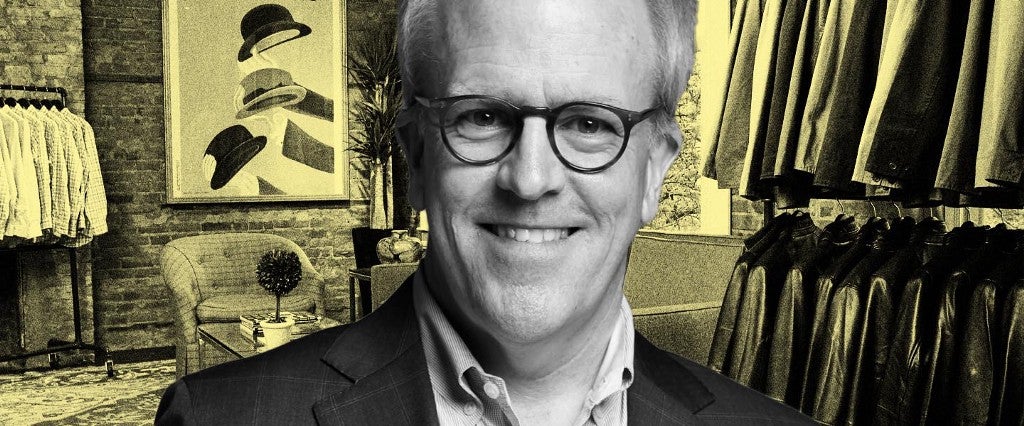I’m at the mall failing to buy pants for my fictional 5-foot-5 boyfriend.
“Sorry,” Melvin at Banana Republic says with a frown. “Everything we stock is 30 inches and up. You can find 28 inches online, though.”
Maria at Nordstrom is equally sympathetic as she presents her best option: A charcoal gray “slim/straight” Bonobos 30-inch chino. “Everything else comes in 34 inches,” she informs me.
“Thirty inches is the shortest inseam we have in the store, and we don’t have anything shorter online,” explains Dan from J.Crew, who suggests buying my boyfriend a 30-inch pair of pants and making it work, since “cuffs are really popular right now.”
When I ask him why J.Crew doesn’t carry anything shorter, he shakes his head matter-of-factly. “Thirty inches is the shortest most stores go. I can’t think of any that do a 28. It’s such an uncommon size that there’s simply not enough people in the market to justify it.”
Really?
Census Bureau figures indicate that 30 percent of American men are under 5-foot-8, and the most recent statistics from the Centers for Disease Control puts the average height of the American man at around 5-foot-9.
Still: “Look, I know I’m shorter than most people. I’ve never really had a problem with it, but you just have to accept that you can’t buy clothes,” 5-foot-3 Joe Carbone, a strength coach for pro athletes like Kobe Bryant, told The New York Times back in 2005.
Five-foot-8 clothier Peter Manning tells me something similar. “When I was 10 years old, I wanted bell-bottoms,” he remembers. “My mother said, ‘Oh sweetie, if we shorten your bell-bottoms they won’t be bell-bottoms anymore.’” From that moment, Manning always knew that whatever store he went into — whether shopping with his mom, friends or partners — it was going to be an unpleasant experience. His shirts would always come over his knuckles. Outerwear would never hit his waist like he wanted. And hemming his pants would make the opening too wide.
“I’ve been searching for clothes that fit my whole life,” he says.
To end this lifelong quest, five years ago, Manning and his business partner Jeff Hansen (5-foot-9) co-founded Peter Manning NYC, a clothing line dedicated to the 30 million men in the U.S. — and millions more around the world — who are 5-foot-8 and under. Or as they prefer to call them, “not-so-tall.” Today, they’re already in their third location, having outgrown the previous two, and count George Stephanopoulos (5-foot-5) and Michael J. Fox (5-foot-4) as clients. Stephanopoulos even did a segment on Good Morning America about the collection.
In addition to pants with inseams about the length of a novice violin bow, Peter Manning NYC offers “not-so-tall” suits, shirts, polos and tees, outerwear and even accessories like cashmere scarves and rope bracelets.
“A lot of stores have big-and-tall lines starting around 6-foot-2, yet only 4 percent of the U.S. male population is 6-foot-2 or taller,” says Jonathan Bennett, co-author of Size Doesn’t Matter: The Short Man’s Handbook of Dating and Relationship Success. “The population of U.S. men under 5-foot-8 is 30 percent. So stores have sections that cater to 4 percent of the population but ignore 30 percent of the population?”
As a result, most men under 5-foot-8 regularly wear ill-fitting clothes — such as pleated pants and loose-fitting shirts that emphasize their smaller frames — explains Brock McGoff, whose website The Modest Man offers style tips and advice for short(er) men. He says standard style tips for the not-so-tall — e.g., stick with vertical stripes — aren’t all that helpful. (The direction of the stripes doesn’t matter nearly as much as the size of the stripes, he explains.) “The most important style tip for short men is to wear clothes that fit. This is true for everyone — men, women, tall people, short people — but it’s crucial for shorter gents because most clothes simply don’t flatter our body type. Since the most common fit problem is length, it’s easy to end up making yourself look shorter than you actually are.”
His solution? The boys’ department. Often, McGoff says, an XL Oxford will fit just right, if a tad long. He offers a range of tutorials:
But it can be hit-or-miss, he warns.
Or, for Bennett, a complete miss. He notes that boys and men have very different body types, so clothes from the boys’ section are often tight and awkward on a man. For example, just because you’re short doesn’t mean you have boy-sized genitalia. Not to mention: “It’s emasculating to shop in the boys section because you’re more or less identifying as a boy.”
Mostly, however, Bennett thinks it’s unfortunate that adults who are within the mainstream of size have to resort to the boys section. Not that he believes having a separate short man department — a la the dreaded husky section — would be any better. “For a lot of guys, going to a short section of a store would be comparable to somewhere between back surgery and a root canal.”
This may be why Peter Manning’s flagship store in New York City is becoming a “not-so-tall” clubhouse of sorts. “It’s upstairs, not on the street,” he says. “So we’re really a destination, like an atelier. People make sure we’re a stop when they come through New York on vacation.”
“I’m always dumbfounded by the breadth of our customer,” Manning continues. “We’ve got everything from super-hipster tatted-up guys to 50-year-old suburban guys. We’re not imposing fashion on anyone. We’re simply giving them a proper fit, and they’re making it their own. For their entire life they haven’t worn clothes that fit right. It’s like you’re constantly being told, ‘We don’t care about you.’ So when you wear clothes that fit, it really transforms you. My partner and I always say, ‘The world doesn’t need another clothing line, but this one they do.’”

